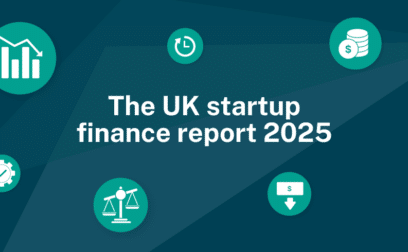TABLE OF CONTENTS
Page written by Chris Godfrey. Last reviewed on May 30, 2025. Next review due April 6, 2026.

No matter if you’re a fresh new start-up, a business with uneven or seasonal income, or simply an organisation that wants to manage cash flow more efficiently, a flexible loan can put you in control. Support working capital, acquire assets, purchase inventory on terms that suit your situation.
A flexible loan is a financing option that allows businesses to borrow funds with adaptable terms, such as adjustable repayment schedules, the ability to redraw funds according to the borrower’s needs, or to make early repayments without penalties. Flexible loans can help businesses better manage fluctuating cash flow or cover unexpected expenses and may offer more control compared to fixed-term loans.
Flexible loans work by offering businesses the ability to borrow and repay funds according to their financial situation. Instead of fixed monthly payments, flexible loans allow for variations based on the borrower’s cash flow. Businesses can often make extra repayments, reduce payment amounts during slower periods, or access additional funds if needed. Interest is typically charged only on the outstanding balance, not the full loan limit, which can reduce the cost of borrowing.
Flexible business loans are useful for managing short-term financial needs, seasonal fluctuations, or unexpected expenses. However, while the flexibility can ease financial pressure, this type of borrowing requires strong financial management.
Like all types of business borrowing, flexible loans have their advantages and disadvantages:

Pros

Cons
Limited companies, sole traders, partnerships. Flexible loans can benefit all types of business.
A flexible loan offers tailored repayment terms, allowing SMEs or startups to manage their cash flow most effectively. Borrowers can reduce their interest costs by withdrawing only the cash they need – an important consideration for organisations that are just starting out. Ultimately, flexible loan terms may give businesses better control of their growth, driving expansion without financial strain.
A flexible loan can help seasonal businesses by aligning repayments with revenue cycles. During off-peak periods, lower payments can ease financial headaches, while higher payments during peak seasons can help repay the loan faster. Adaptable repayments can support cash flow management, ensuring business continues smoothly despite income fluctuations throughout the year.
Flexible loans can benefit businesses with irregular income by allowing customised repayment schedules that match unpredictable cash flow. Businesses can adjust payments during low-income periods and pay more when revenue improves. Full flexibility helps maintain financial stability, avoid defaults, and support continued operations even when income is uneven.
Flexible business loans come in different varieties and are not one-size-fits-all. Popular options include:
Also known as a business line of credit, a revolving credit facility functions like a high-value credit card. Businesses can withdraw as much as they want when they want from a loan facility up to the agreed limit of their borrowing. Once borrowed funds are paid back, they can usually be borrowed again. Interest rates are typically fixed, and businesses may repay on a set or ad-hoc schedule. Security may be required.
Available for businesses that accept customer payments by credit and debit card. A merchant cash advance allows you to borrow against the value of your card sales. As your card sales increase, your borrowing limit goes up. Pay the loan back with a fixed percentage of your card sales on a daily, weekly or monthly basis. Your sales act as security for the loan. No added collateral required.
Available from banks and some building societies, a business overdraft is a credit facility that allows a business to withdraw more money from its bank account than it has in it, up to an agreed limit. Overdrafts are typically used to cover short-term cash flow gaps, ensuring operations continue smoothly. Interest is charged only on the overdrawn amount, making it a flexible funding option. However, high service fees and interest rates can apply. Security may be required.
A flexible term loan is a type of business loan that offers adjustable repayment options, such as varying instalment amounts or early repayment without penalties. It provides funding for a set period while allowing businesses to manage repayments based on cash flow. This type of flexibility makes it easier for borrowers to handle changing financial needs or unexpected expenses.
Obtaining a flexible loan is similar to applying for other types of business finance. Lenders will review your credit score (typically both personal and business) and ask for key business information.
Depending on the type of flexible loan you are seeking, you may need to provide:
Generally, the longer you’ve been in business and the better your credit score is, the more you’ll be able to borrow and the less interest you’ll pay.
You can search for flexible business loans by approaching banks, building societies and online lenders one by one, a process that may take weeks or even months, or you can use the services of a loan marketplace that will immediately introduce you to a choice of loans from a range of lenders. Some marketplace platforms can also give you advice and help you with the application process. This can be especially useful for borrowers who have never taken out a flexible business loan before.
If the options above are not right for you, there may be other ways to obtain the funds your business needs:
Invoice financing (also known as invoice discounting) allows businesses to borrow against the value of their outstanding invoices. Instead of waiting 30, 60, 90 days or more, release the cash tied up in your unpaid invoices as soon as you issue them – sometimes in 24 hours or less. You retain control of your sales ledger and are still responsible for collecting payment from your customers. This means clients need never know you’re using your invoices to raise funds. No added security required.
Asset-based lending is a type of loan secured by a company’s assets, such as inventory, property, or plant and equipment. Lenders use these assets as collateral, which reduces risk and may allow businesses to access funds even with weak credit. Asset-based lending is typically used for working capital or cash flow support. No added security required.
Peer-to-peer (P2P) lending is a method of borrowing money directly from individual investors through an online platform, bypassing traditional lenders such as banks. Businesses apply for loans, and lenders may choose to fund them, often in small amounts across multiple loans. Although this lending method can be time-consuming for borrowers, it may offer access to funds when businesses are unable to obtain other types of business loan. Security may be required.
Working with business finance experts can make all the difference when applying for a loan. Contact Swoop to discuss your borrowing needs, get help with your application and to compare high-quality flexible loans from a choice of lenders using our business funding platform. Give your business the boost it deserves without putting strain on cash flow.
Chris is a freelance copywriter and content creator. He has been active in the marketing, advertising, and publishing industries for more than twenty-five years. Writing for Barclays Bank, Metro Bank, Wells Fargo, ABN Amro, Quidco, Legal and General, Inshur Zego, AIG, Met Life, State Farm, Direct Line, insurers and pension funds, his words have appeared online and in print to inform, entertain and explain the complex world of consumer and business finance and insurance.
Swoop promise
At Swoop we want to make it easy for SMEs to understand the sometimes overwhelming world of business finance and insurance. Our goal is simple – to distill complex topics, unravel jargon, offer transparent and impartial information, and empower businesses to make smart financial decisions with confidence.
Find out more about Swoop’s editorial principles by reading our editorial policy.
Related pages
Get your free Flexible Loans quote today
Join the 110,000+ businesses just like yours getting the Swoop newsletter.
Free. No spam. Opt out whenever you like.



























We work with world class partners to help us support businesses with finance
Kingfisher Way, Silverlink Business Park, Newcastle upon Tyne, NE28 9NX, UK
View in Google MapsAberystwyth Innovation and Enterprise Campus
Gogerddan Campus
Aberystwyth University
Ceredigion
SY23 3EE
Dogpatch Labs, The CHQ Building, Custom House Quay, Dublin, Ireland
View in Google MapsSuite 801, Level 8, 84 Pitt Street, Sydney, NSW 2000, Australia
View in Google Maps43 W 23rd St, New York, NY 10010, United States
View in Google Maps21 Dreyer Street, Cape Town, South Africa, 7708
View in Google Maps
Disclaimer: Swoop Finance helps UK firms access business finance, working directly with businesses and their trusted advisors. We are a credit broker and do not provide loans or other finance products ourselves. We can introduce you to a panel of lenders, equity funds and grant agencies. Whichever lender you choose we may receive commission from them (either a fixed fee of fixed % of the amount you receive) and different lenders pay different rates. For certain lenders, we do have influence over the interest rate, and this can impact the amount you pay under the agreement. All finance and quotes are subject to status and income. Applicants must be aged 18 and over and terms and conditions apply. Guarantees and Indemnities may be required. Swoop Finance can introduce applicants to a number of providers based on the applicants’ circumstances and creditworthiness. Swoop Finance Limited is registered with the Financial Conduct Authority as an Account Information Services Provider (reference number 833145). Swoop Finance Limited is authorised as a credit broker under FCA registration number 936513. If you feel you have a complaint, please read our complaints section highlighted above and also contained within our terms and conditions. Swoop Finance Ltd is registered with Companies House (company number 11163382, registered address The Stable Yard, Vicarage Road, Stony Stratford, Milton Keynes MK11 1BN). VAT number: 300080279
Clever finance tips and the latest news
Delivered to your inbox monthly
Join the 110,000+ businesses just like yours getting the Swoop newsletter. Free. No spam. Opt out whenever you like.
Thanks for requesting a call back
a member of the team will be in touch.




